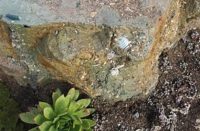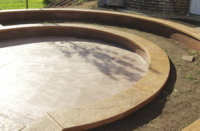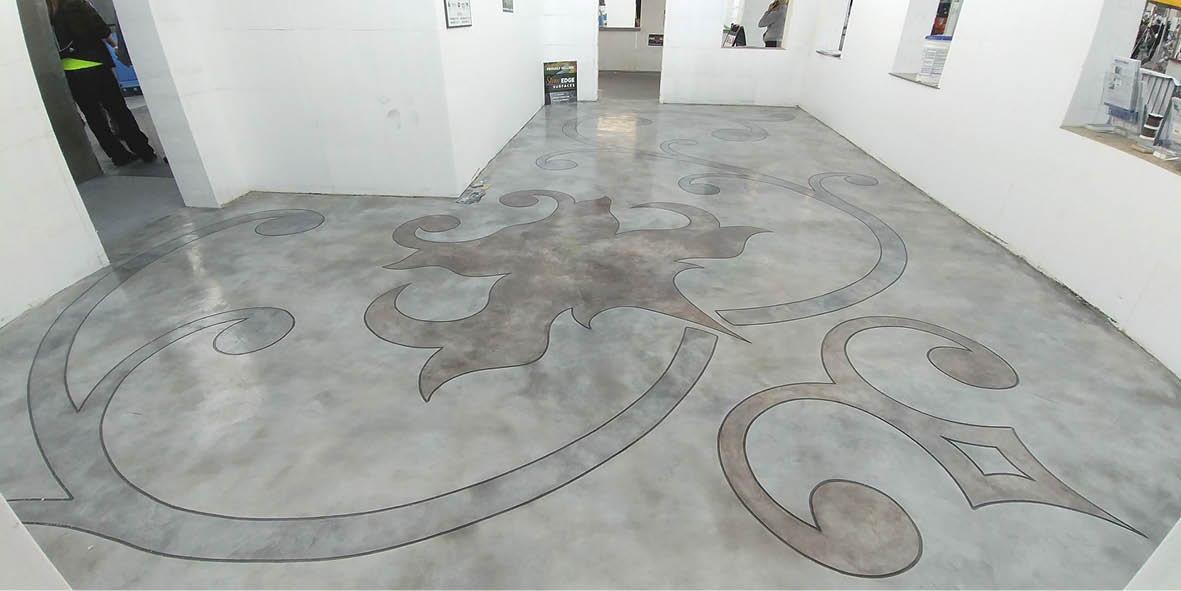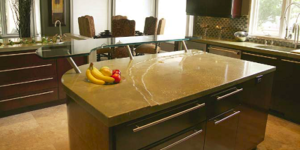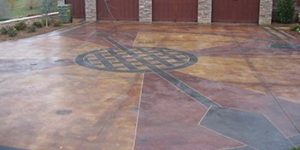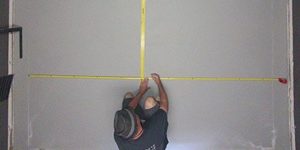Gray seems to be dominating current color schemes for everything. As I’m not a fan, I hope this trend ends soon. Forcing me to work in gray almost makes me turn down jobs. But work is better than being idle so if gray is your prospect’s preferred hue, here are a couple of important points to think about when talking to clients.
First, gray concrete is a warmer gray than most of the wall colors clients are picking. However, the shade varies throughout the country. In San Diego at the 2016 Concrete Decor Show, for instance, the concrete I worked on at the Brawl in the Fall was cream colored. In Nashville, where I live, the concrete is much colder. Please be aware of your concrete’s temperature in comparison to the wall colors clients are picking.
Also note that most of our gray stains are colder than the color of concrete and there aren’t a lot of warm gray stain choices in our industry. That’s not to say there’s not a perfect gray dye or water-based stain out there. I’m just saying they are hard to come by.
Finding middle ground
Applying a cold gray stain on top of a warm gray can make the cold gray appear bluish. Take that into consideration on your next gray sales call. When I break down these points to my clients, I typically get them to agree to change the floor color from gray to a very cold brown that I dilute so much you see some of the gray showing through. I also get them to realize they can change the color of their walls easier than I can find the perfect gray concrete color to match.
Before you start the application, be aware of the floor’s color. Some contractors use an overlay on all their jobs to control this. Whether you’re using the existing concrete or creating a new surface color, the initial color on the surface is called the “ground” color.
When I paint on a canvas I start by priming the surface with a white primer called gesso. I draw my design and then start my ground colors for all my spaces. The ground color affects everything I do from that point on. Most of the time, I paint the complementary color over the ground color to create a vivid reaction and make my paintings vibrate.
Overlays make a difference
The same thing happens with concrete. Be aware of the initial gray color of the floor, how a gray overlay will change that and how a white overlay will affect the colors that go on top of it. When a white overlay is used as a ground color, you’ll get more vibrant colors, but you will lose depth. If you’re using an integral color in your overlay or concrete, note how that will affect your stains.
Most of the time, the color chart you show your clients is based on gray concrete or white overlay. If you add color to the overlay and then stain it with the color choice your client accepted, it won’t look the same. Having an awareness of how everything affects color will save you tons of headaches and impress your clients.
Here are two of my ocean scenes. Figure 1 has a white overlay as the ground color. Figure 2 is on ordinary concrete from Texas. In figure 1, the colors are very vibrant. There is some depth in the blue water, but I had to apply many layers of dark blue to create that depth.
In figure 2, I only stained one color over the gray floor and achieved multiple color variations. To me there is a lot more depth in figure 2. There are even hints of brown and green from the concrete slab that I never noticed during the process, but they came out during the sealing stage. You can’t very easily recreate that kind of depth on white overlay.
Figure 3 was an interesting challenge. My client wanted a pool deck like what you would find in New Mexico. I prepared a lot of samples ahead of time and decided to add a sand color to the white overlay as a ground color. Then when I stained over it, I got unique color changes that I couldn’t have achieved any other way. The darker colors are acid stain and you can see a hint of that ground color showing through. I applied a super-diluted tan acid stain over the integral color to add just a hint of depth to the base color.
It’s in the wash
At the 2018 World of Concrete this past January, I learned a new technique from Keefe Duhon of Concrete Revolution which has helped me contend with this gray-obsessed generation. During one of our demonstrations during the Decorative Concrete LIVE! event, he showed me a color combination I would never have thought to try on my own.
First, Duhon applied a white micro topping on the floor. (Since I am not a fan of white, I had a lot of reservations about applying it as a ground color.) Then we drew my design and lightly stained the details. His goal was to keep the stain color subtle, not use it to make a bold contrast like I tend to do.
After we finished the design detail, he applied a brown and a black that were very diluted creating a wash over the entire area. The outcome was subtle hints of brown and gray with limited white still showing.
Many of you know I’m very set in my ways when it comes to techniques and applications, but I must admit I was extremely impressed with Keefe’s handiwork. He accomplished the results we wanted in a way that was foreign to me. Many thanks to Duhon for showing an old timer a new trick.
It just goes to show you — No matter how long you work in this industry, doing your thing, there’s always something new to learn out there.
